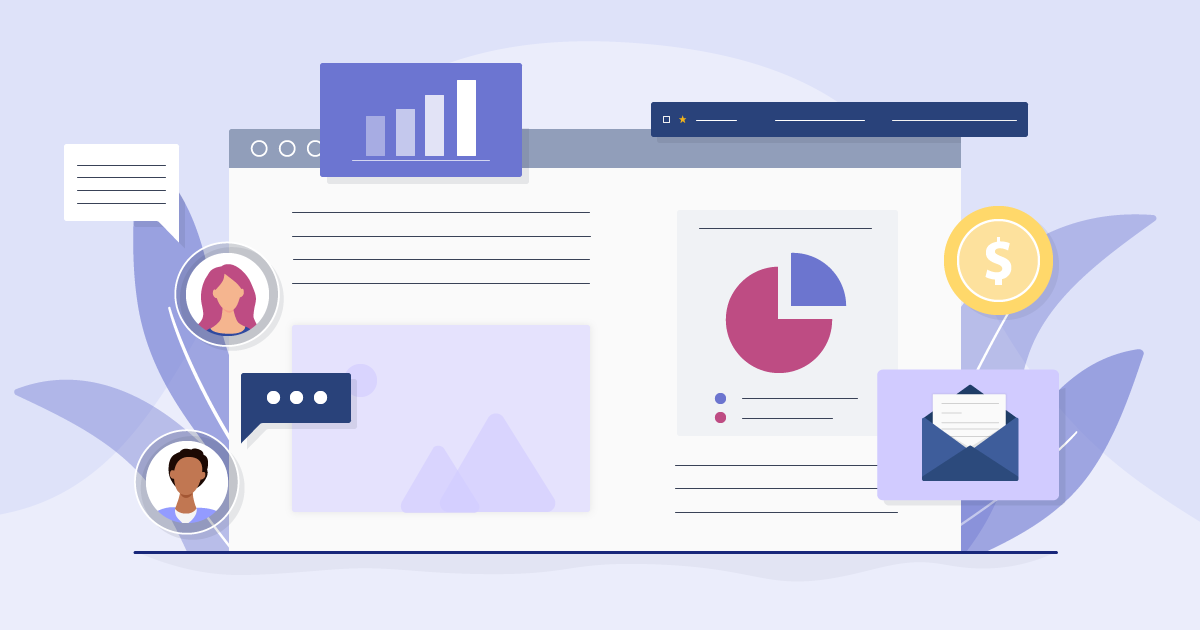

Demand Generation: Definition, Strategies & Tools For Successful Businesses [2025]
What is demand generation? Is it all about generating leads for your business or something more? Let’s find out!
First off, having a strategy that focuses on generating demand will help you promote your brand awareness and educate your target audience even before they enter your funnel.
So, where do you start? Today, we’ll help you create a demand generation strategy that’ll make your business thrive. Among others, we’ll explore:
- The factors affecting your demand gen
- How to create an efficient strategy
- The tools you’ll need to make it happen
Without further ado, let’s get started!
What Is Demand Generation?
Demand gen entails a series of activities that focus on increasing brand awareness and engagement long-term. To make it work, you need to build a process that will position your product/service in front of the right customers, considering every touchpoint throughout the customer journey.
Demand gen is often used interchangeably with lead gen. However, as you’ll see below, this isn’t the case.
Demand Generation Vs. Lead Generation
Lead generation is a process usually found on top of the marketing funnel. The goal of this practice is to capture your target visitor’s interest through various means such as landing pages, blog posts, online forms, etc., to create a sales pipeline.
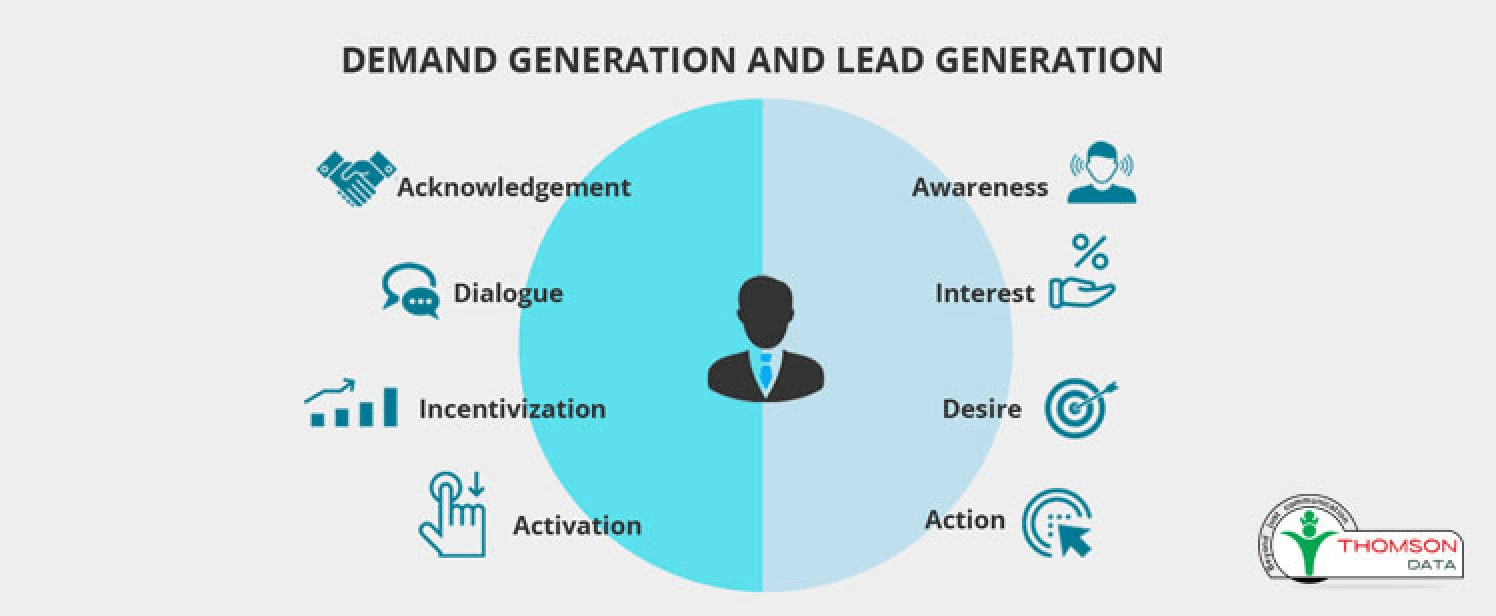
On the other hand, demand gen has a broader scope, focusing on engaging and educating your audience until they reach the advocacy or customer retention stages.
So, in a nutshell, lead generation is about turning visitors into qualified leads, while demand gen is about building meaningful connections with your audience.
The Stages Of Demand Generation
As you might suspect, content plays a major role in getting your visitors to become part of your business. Especially for B2B companies, creating and delivering specific pieces of content for your customers is a must.
For this reason, marketers need to know the stages of demand gen to plan their content marketing efforts more effectively. Let’s see them:
Creating Brand Awareness
Brand awareness is one of the most important top-of-the-funnel processes you need to consider when mapping the buyer’s journey. To turn your visitors into qualified leads, you have to find ways to make them notice your product/service and start hinting at it being part of the solution they seek.
What’s more, addressing important questions and consulting your buyer personas is crucial to crafting targeted content for your audience.
Generating Interest
Now, when it comes to the second stage, generating interest is all about turning your prospects into MQLs (Marketing Qualified Leads). To do it, you need content that’ll educate and show them how you can tackle their pain points in the most effective way possible.
In this step, marketers usually focus on their SEO strategy, targeting niche-specific keywords and running social media campaigns to increase engagement, establish opportunities, and build trust.
Reaching A Decision
If your lead is interested enough in your product/service and your messaging is spot on, they will slowly turn into SQLs (Sales Qualified Leads). Here, your sales team needs to approach them with personalized content and sales calls that will highlight the immediate benefit of becoming customers.
Knowing the above stages is crucial to plan a demand gen program that will maximize your lead gen efforts and turn your visitors into advocates, not one-time buyers. But what about the factors influencing this process? Let’s take a look below!
Factors Affecting Demand Generation
Before we see how to build a killer demand gen process for your audience, we need to examine the three factors that might influence your activities:
Lead Generation
Without leads, your demand gen marketing tactics will be unsuccessful. Planning a lead gen process will help you feed your marketing funnel with prospects that have the potential to turn into customers of your business.
The more you invest in your tactics, the most leads you’ll get. Then, your sales teams can take over and guide them through the sales funnel by targeting their steps throughout the buyer’s journey.
Existing Demand
Of course, let’s not forget that the existing interest in a product/service is a crucial factor for your demand generation. As you know, different audiences have very different needs. To ensure that you’ll capture their attention, you need to be ready to deliver content that will move them from one step to the next.
Lead Conversion
Finally, each lead might have different decision-making criteria. To ensure that they’ll consider you as a solution, your sales team needs to know exactly what pain points need to be addressed. The more you know about your target audience, the better you will enhance your lead acceleration tactics.
Now it’s time to see how to structure the perfect plan to nail your process!
How To Build A Killer Demand Generation Marketing Strategy
From setting your goals to optimizing your processes, here’s everything you need to create your strategy!
1. Set Your Goals
Goal-setting is a no-brainer when you plan a strategy. While it might sound like a simple step, you shouldn’t take it for granted. Planning and having a clear direction will allow you to succeed faster and help you make certain optimizations along the way.
You can easily start your goal-setting process by consulting the SMART model and adjusting it to your needs.
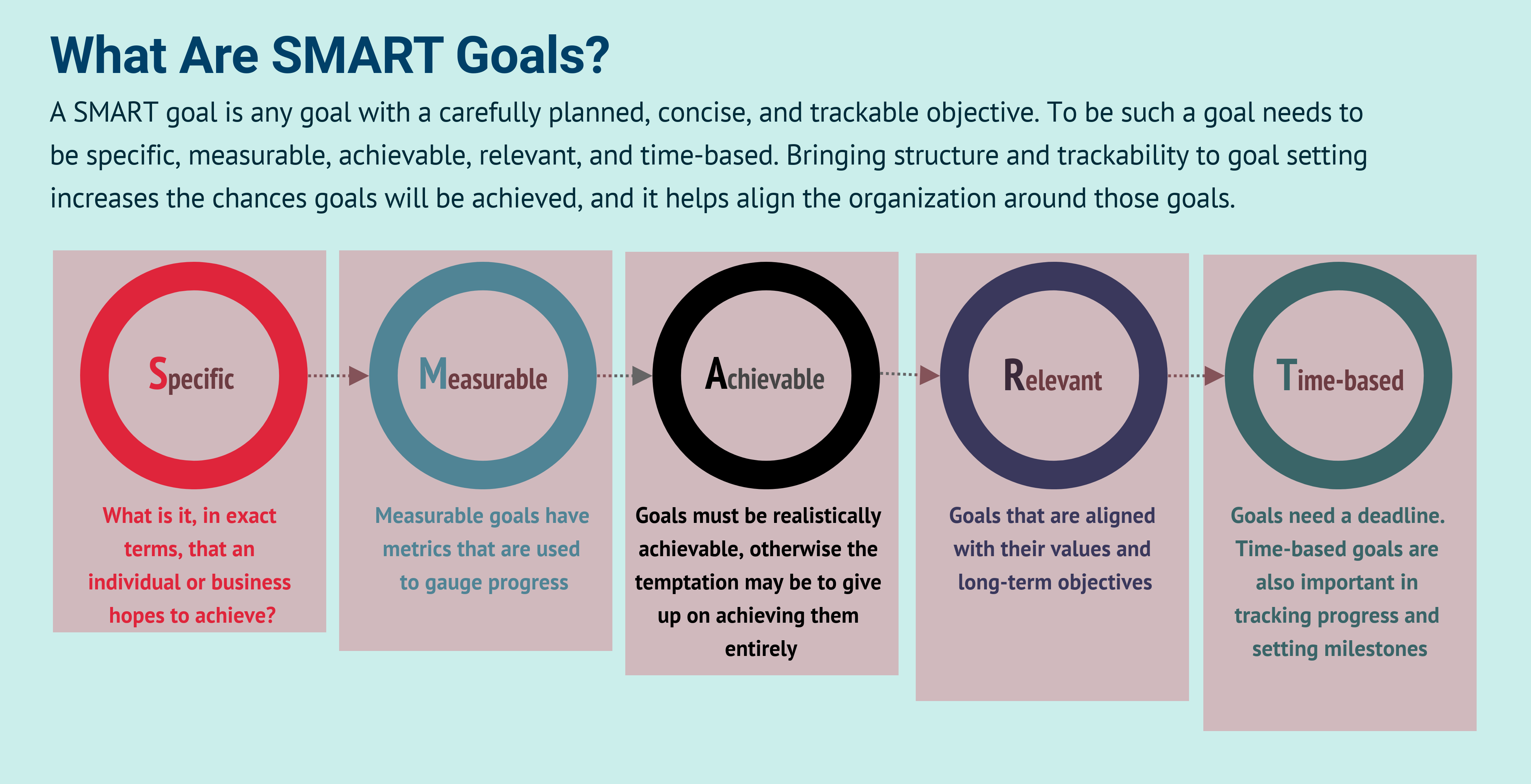
Here’s an example of using the above model to figure out how to set your demand gen goals:
Goal: Increase my demand generation and build a loyal customer base.
- Specific: Boost brand awareness and build trust with customers.
- Measurable: How many visitors turned into advocates by the end of the process.
- Achievable: Use my marketing and sales teams to attract and convert leads.
- Relevant: Target people who will be genuinely interested in my product/service.
- Time-based: Set a deadline and then monitor my results.
2. Find Your Target Audience
Now that you’ve set your goals, it’s time to find the right people for your marketing and sales pipelines!
When you start your business, you have an idea of who wants to buy your product/service. Nevertheless, selecting an audience to market shouldn’t be a random choice. So, you might ask, how do I find the right audience then? Well, that’s a job for your buyer personas, i.e., representations of your ideal customers and their characteristics.
To create them, you’ll need to collect various consumer behavior data and do your own research. More specifically:
- Check demographics and psychographics
- Look into customer habits
- Do extensive market research
- Conduct interviews
Remember that building realistic personas is key to marketing to the right people and enhancing those profiles over time to approach more potential customers.
So, now that you have the right audience, it’s time to start engaging it. How? With content!
3. Create The Right Content
Content marketing is the pillar of every successful demand generation program. This means that if you manage to craft unique and valuable resources, your audience will have greater chances of engaging with your brand and converting.
Below are some of the best content types you can use to educate and intrigue your leads. Let’s see:
Blog Posts
When people want to solve a pain point, they will use a search engine like Google to discover potential solutions.
For example, these are some SERP results for the keyword “best email marketing tools.” As you can see, the search engine displays relevant content from various blogs like Moosend, Hubspot, and Buildfire’s:
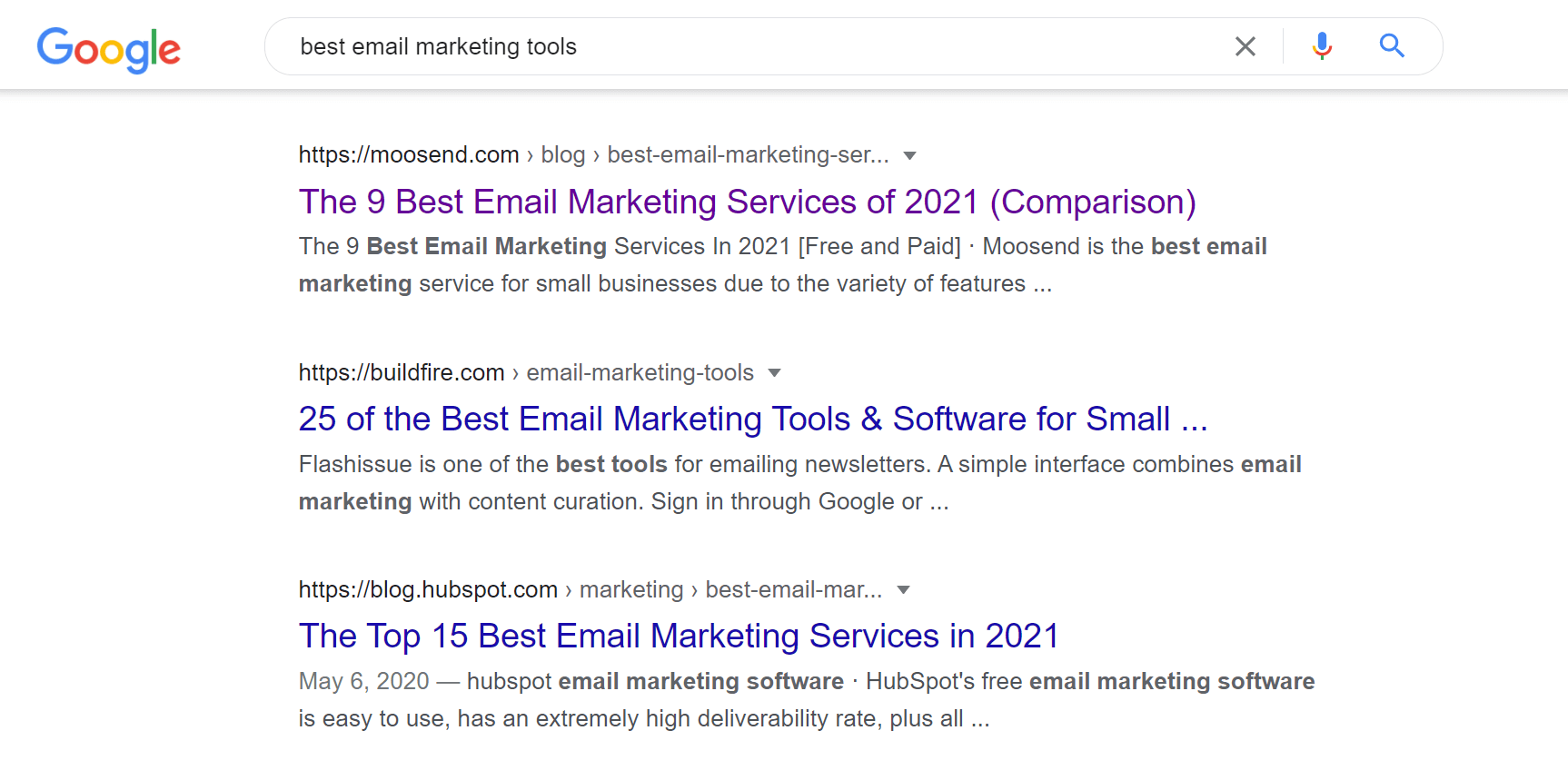
Targeting specific short-tail and long-tail keywords is essential to bring your content in front of the right eyes. Of course, to make this work, you’ll need to rank your content.
For that, you can start with keyword research using SEO tools like Ahrefs to discover what your audience is searching for. Then, all you have to do is create a valuable blog post that will educate and provide them with solutions.
Case Studies
This type of content is very popular among B2B companies as it gives their audience a descriptive analysis of certain problems and how their product/service tackled them.
For instance, here’s a case study on how L’Oreal transformed its business through Sitecore’s Experience Platform:

Case studies are a valuable tool you can use to show skeptical visitors that your products/services are worth their time and can actually solve their pain points!
Webinars
Creating webinars is another great weapon for your demand generation strategy as it will help you increase your brand awareness and educate potential users.
Moreover, collaborating with experts in your field will boost your thought leadership and open the door for future opportunities that will benefit your marketing strategy long-term.
Here’s an example by BuzzSumo’s collab with Brian Dean:
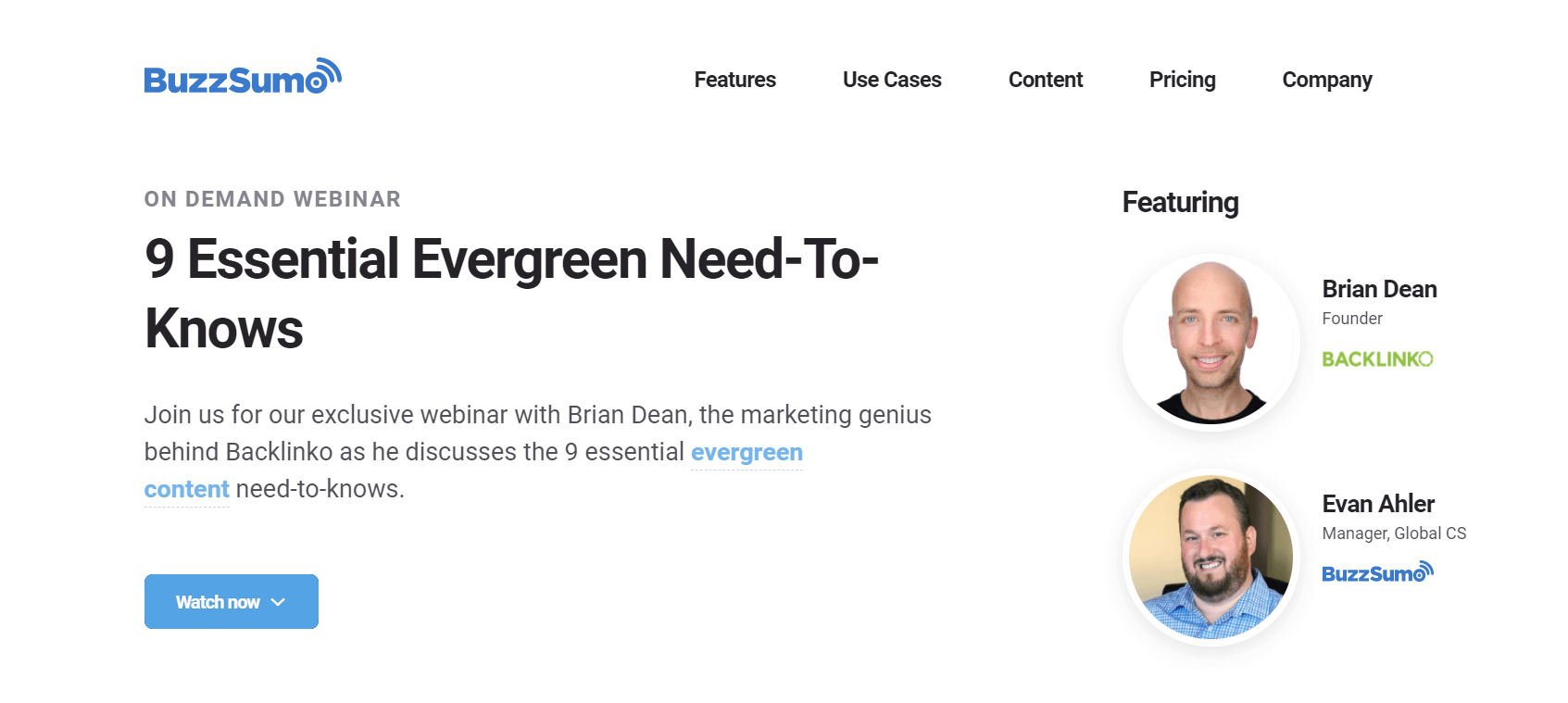
White Papers
If you want to give your audience a better understanding of a problem, you can easily create white papers! This piece of content will help you enlighten your audience, provide them with a solution to a common pain point or help them reach a buying decision.
White papers are an important part of B2B marketing. To make them work, though, you need to pay attention to their creation, making them clear and informative.
Here’s what HSBC’s finance white paper looks like:
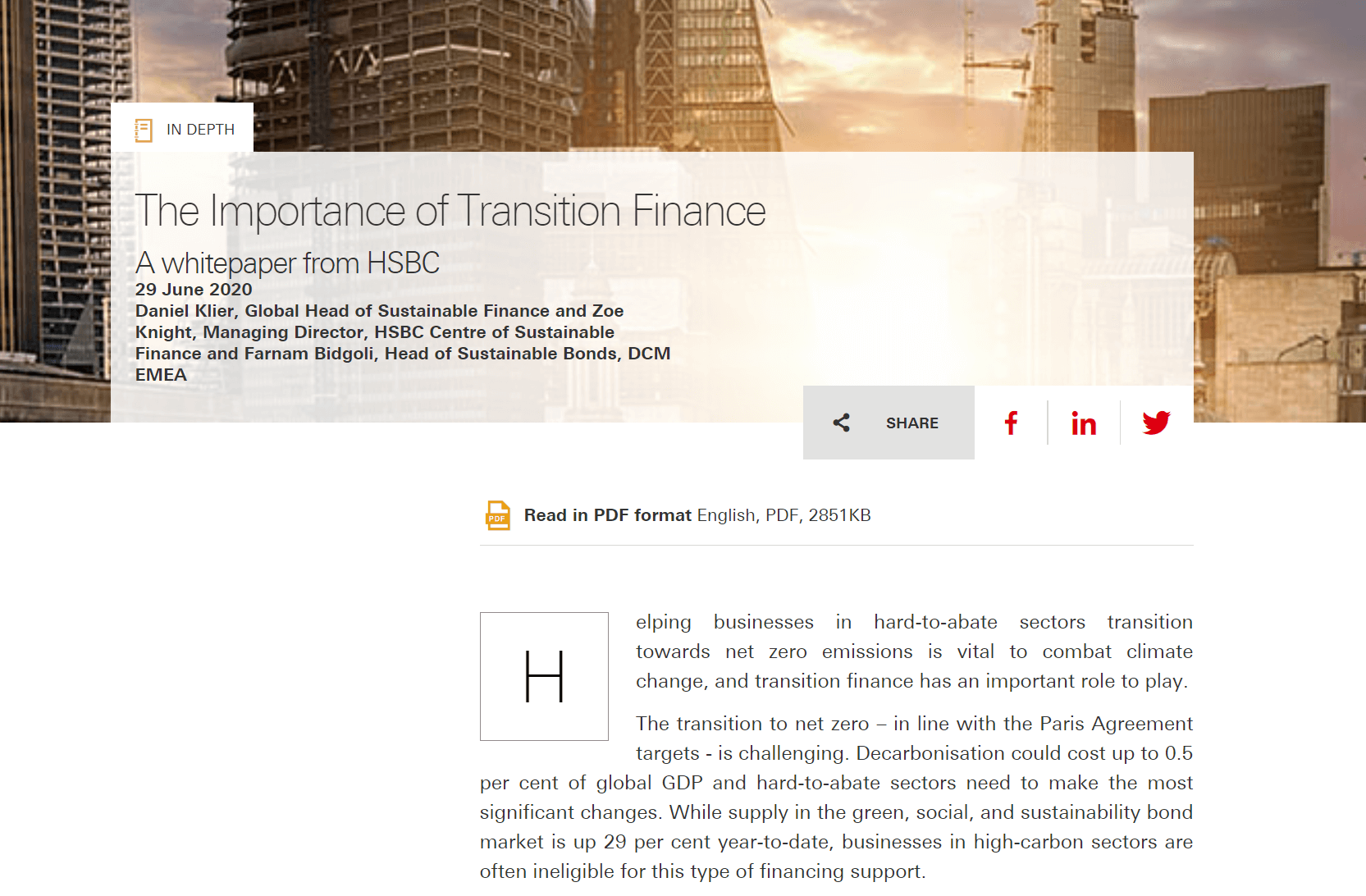
Video Content
Last but not least, you can leverage the infinite possibilities of video marketing to craft short tutorials, explainer videos, product demos, and so on. Also, if you want to invest in such content actively, you can create a YouTube marketing strategy to power up your demand generation more efficiently.
Video content is perfect for shortening the sales cycle and giving your audience more reasons to get your product/service. A picture is worth a thousand words, so imagine what a video can do!
Here, Slack’s “How to use” video is perfect for showing potential users what the app is about:
4. Choose The Best Distribution Channels
Now that you created all this amazing content, you need to find the best channels to distribute it to your audience. But how do you pick a channel?
Well, it all depends on what your audience uses. For instance, everyone has an email address and a social media profile these days. Choosing email marketing is a no-brainer for nurturing and engaging your subscribers. Similarly, using social media will give you various platforms to reach your audience like Facebook, Twitter, LinkedIn, etc.
Of course, you can use many more channels like SMS, SEO, print advertising, and so on. Nevertheless, let’s focus on email and social media as they are the easiest and most cost-efficient to leverage:
Email Marketing
First of all, email marketing is still on top of its game with an excellent return on investment (ROI). What’s more, it is easily accessible by your target audience, and you can use it to:
- Onboard new users
- Promote your online resources (ebooks, whitepapers, webinars)
- Share valuable tips
- Show your blog content
- Promote special offers
As you can see below, Workable uses this email campaign example to promote its new webinar to its subscribers:
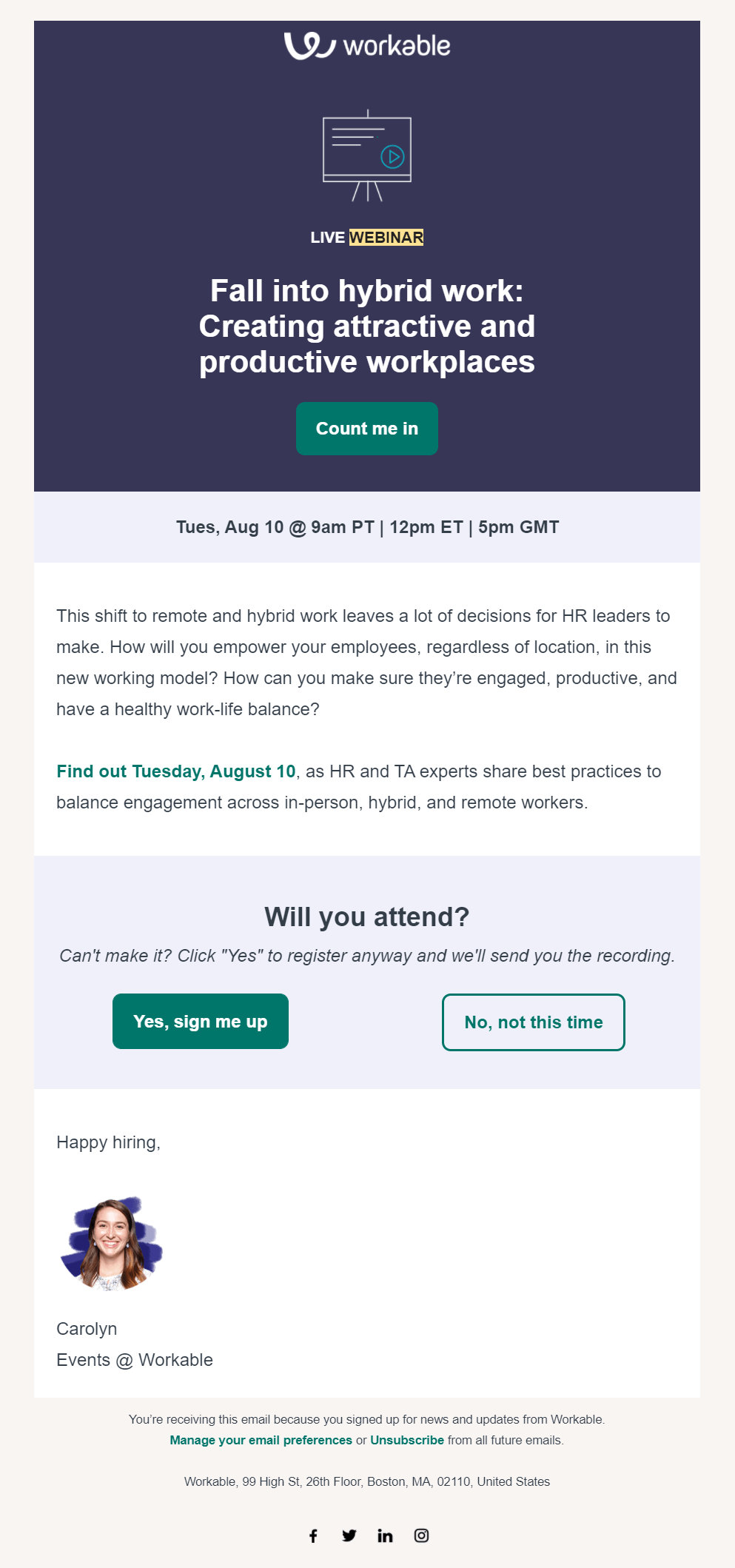
Emails are simple, easy to access, and converting. So, it should among your top distribution channels no matter what!
Need a great email marketing and marketing automation tool to power up your demand gen marketing strategy? Sign up for a free Moosend account and start nurturing your audience with beautiful campaigns, landing pages, forms, and more.
Social Media
The best way to leverage this channel is to use it for organic traffic, which requires posting engaging content regularly. Moreover, you can take advantage of paid means like Facebook Ads or other Pay-per-click (PPC) advertising methods found on these networks for more targeted campaigns.
Here’s a simple example of social media demand generation by Forrester:
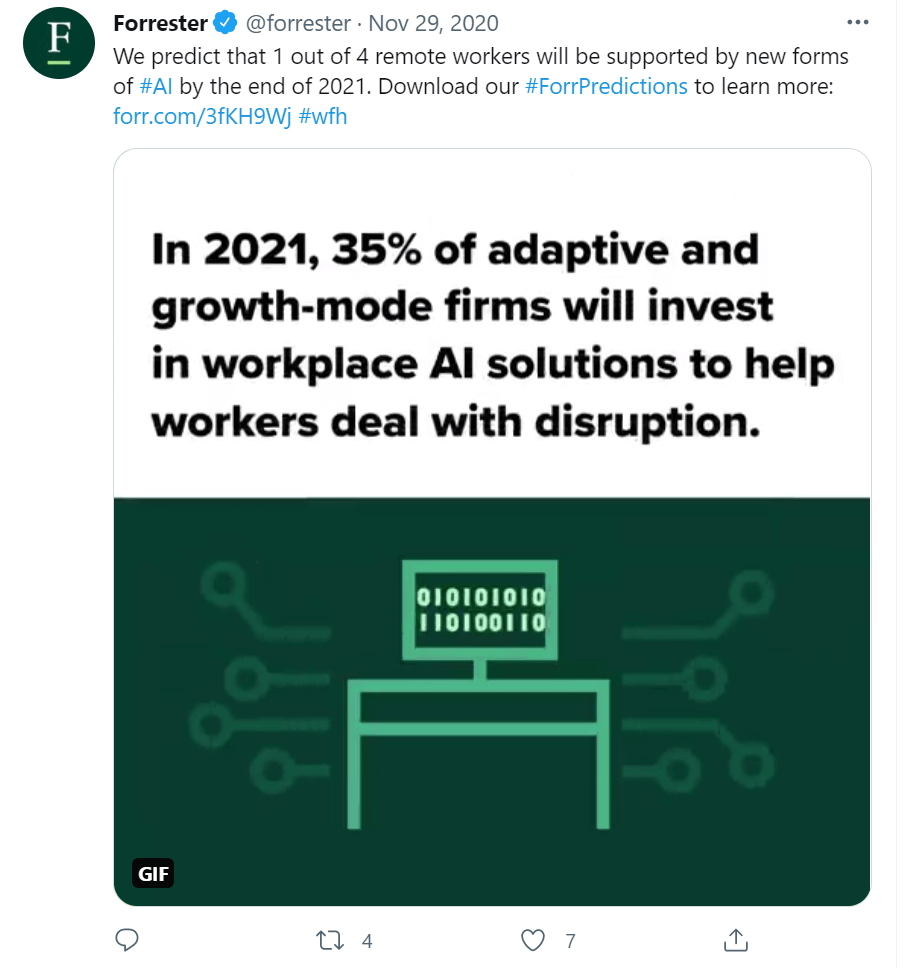
Tip: You can always experiment with new networks but you should do that after establishing yourself on the most popular ones first! Again, knowing where your audience “hangs out” will increase your engagement efforts!
5. Adopt Inbound Marketing Practices
Inbound marketing is all about building solid relationships with your target audience. As you can imagine, customers who trust you and believe in your vision will be more likely to stay with your business. Also, they’ll have fewer chances of turning to your competitors., which is extremely important for maintaining your retention!
To take advantage of inbound practices for your demand generation strategy, you need to consider three key methods. Let’s see them below:
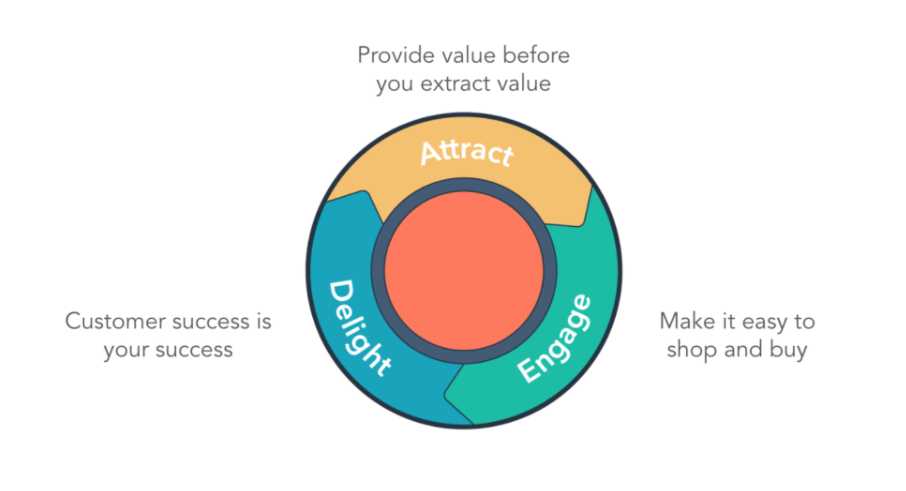
Attract Your Visitors
Intriguing your potential customers is possible through organic and paid means. As we said, you can create blog posts, ebooks, social media posts, or paid ads to capture their attention.
Of course, since this is inbound marketing, you have to filter everything through SEO to make sure that your keywords correspond to what your audience is searching for. The result will be a demand gen strategy that targets your audience with authentic and relevant content exactly when they need it.
Engage Your Prospects
To get to the next step, you need to engage your prospects with valuable information. The best tactic is to make targeted sales calls! Just make sure that your representatives are aware of your potential customer’s pain points to approach them with the right messages. And the same applies to your customer service agents!
A great way to ensure a seamless experience is to break down the organizational silo by embracing the omnichannel marketing approach. This way, all your sales and marketing team members will be up to date and work together to provide the best customer experiences.
Delight Your Customers
Finally, to satisfy your buyers, you need to discover what they like the most! To find out, all you need to do is ask!
The best way is to collect feedback through email surveys, social media polls, customer support queries, and so on. Also, don’t hesitate to use the data you collect to improve any aspects that might be the source of possible dissatisfaction!
6. Leverage Lead Scoring
Unfortunately, not every lead entering your pipeline has the same quality or intentions. If you want to be efficient, you need to leverage a process called lead scoring to identify high-quality leads and distinguish them from prospects that have low interest in moving through the funnel.
You can easily design a lead scoring model by creating a point system for different actions. For instance, if a lead opens and clicks on your email campaign, you can assign them 5 and 10 points, respectively.
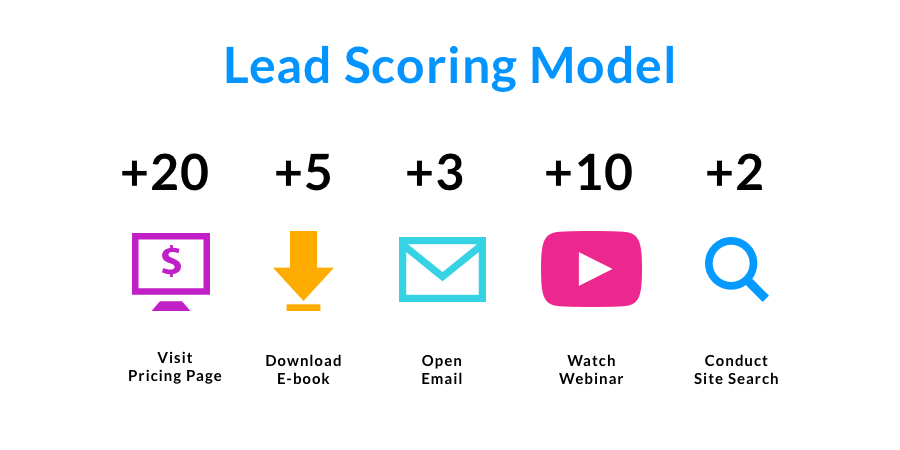
Also, you can use this model to take points away from your leads to find dis-engaged prospects by giving them, for instance, -5 points for not interacting with your demand generation campaigns.
Lead scoring is a crucial tactic you need to implement as it will help you ace your outreach, lead management, and lead nurturing efforts!
7. Measure Your Demand Gen Performance
As always, if you don’t monitor your demand gen marketing strategy, you won’t know if your tactics are working.
To do it, you need to keep track of marketing metrics to measure your actual demand gen performance. Here are the most important things to check:
- Visitor to Lead Conversion Rate: The number of visitors who successfully turned into leads (MQLs, SQLs).
- MQL to Buyer Conversions: How many marketing qualified leads turned into your customers.
- Customer Lifetime Value (CLV): The net profit you can earn from each buyer throughout their journey.
- Customer Acquisition Cost (CAC): The sum you need to spend to convert someone. The lower your CAC is compared to your CLV, the better.
- Cost Per Lead (CPC): The money spent to acquire each lead through advertising methods.
8. Optimize Your Strategy
Last but not least, building a great strategy doesn’t mean that it will keep working forever. As customer habits change and new pain points arise, you need to optimize your strategy and sales process.
Polishing your tactics is essential for every step of your strategy, from changing the type of gated content you offer to giving your audience a free tool to use.
Remember that change is always good, so make sure to embrace everything that will help you improve your efforts and conversions!
Demand Generation Tools To Use
Since you’re practicing digital marketing, you already have a variety of tools in your marketing stack. While you can easily use them, finding services that focus on improving your demand gen program will be more than ideal!
With this in mind, let’s check what you might need to make things easier:
Marketing Automation Services – Moosend
Automating your tasks is a huge advantage for modern businesses. To do it, you can leverage marketing automation software like Moosend to create automated workflows and action-triggered campaigns to nurture your audience. On top of that, the platform will equip you with a visual workflow builder and pre-made recipes to scale your business.
Want to try the tool? You can easily register for a free account to try out marketing automation, the email builder, online forms, reporting, and more!
CRM Tools – Salesforce
Customer management platforms (CRM) are crucial to nail your lead management efforts. One of the biggest players in the field is Salesforce.
The service will offer you an intuitive interface to register lead information, keep your customers engaged, and forecast user behavior using real-time data.
SEO Platforms – Ahrefs
Targeting the right keywords is necessary to put your content in front of the right eyes. Tools like Ahrefs will give you the chance to discover what your audience is searching for through its Keyword Explorer feature.
Moreover, you can use the software to track your ranking progress, run a competitor analysis and, overall, improve your demand generation efforts in the most efficient way.
Social Media Tools – Buffer
Of course, don’t forget about your social media tools! Apart from your businesses accounts, you can use platforms like Buffer to take your social media marketing strategy to higher heights.
Buffer will equip you with the means to create social campaigns, monitor your performance, and build meaningful connections with your audience. All these will help you improve your process and turn social media into a powerful demand generation weapon.
Account-Based Marketing (ABM) Services – Terminus
Lastly, ABM software will allow you to cater content and messages for the decision-makers of specific accounts.
Platforms like Terminus can assist you in finding those accounts and personalizing your outreach efforts. In addition, the software will give you access to a variety of retargeting management tools and metrics to track your performance for better results.
Build Your Demand Gen Strategy
Creating an efficient process to generate demand isn’t an easy feat since you first need to understand the factors affecting it and the stages you need to focus on.
By understanding those influences first, you can create an approach that will lead to a successful demand gen program that will perform.
Of course, to make it work, don’t forget to search for software that will give you the means to thrive. So why not start with marketing automation first by signing up for a free Moosend account?
Now it’s time you start building that strategy from the ground up! Go!


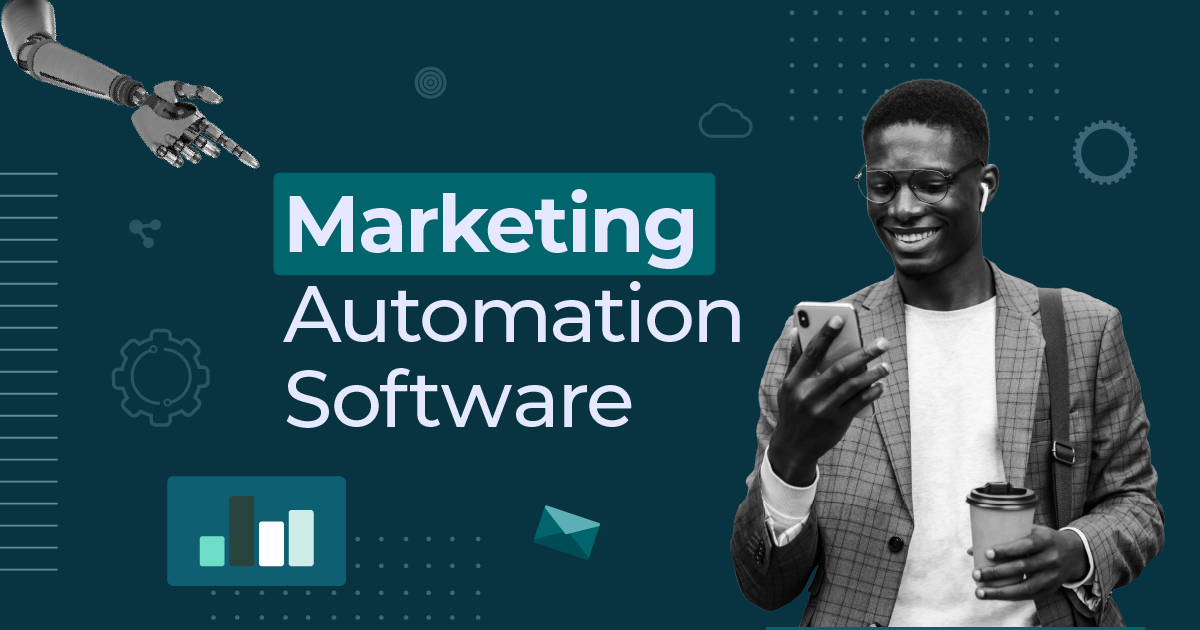
 Published by
Published by
